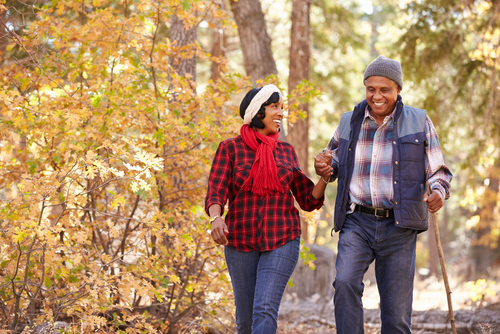
The changing of the seasons brings changes in the environment. Some of these shifts are nice.
Cooler nights make for easier sleeping. If you like snow, it’s on the way!
Other changes may not be so welcome. Cooler, drier air and different allergens can cause dry eyes during the fall.
Keep reading to learn more about five ways to treat dry eyes this fall.
What Causes Dry Eyes?
Dry eyes are usually either due to environmental factors or tear production issues. If your eyes get drier in the fall but are not dry year-round, you have seasonal or environmental dry eyes.
In the fall, the most common causes of dry eyes are allergies and drier air. Things like mold, ragweed, and dust mites are pervasive and can cause allergies.
Dry eyes are one of the most common allergy symptoms. These unique fall allergens can contribute to them.
The air also gets a lot drier during the fall, which dries your eyes out more than humid summer air. As the air cools off outside, it holds less moisture making it drier than during summer.
Also, as the air gets colder outside, you turn the heat on indoors. Cooler outside air and warmer heated air inside combine to dry your eyes out. The less ambient moisture there is, indoors or outside, the more it sucks the fluid out of your eyes.
How Do You Treat Dry Eyes?
If you have seasonal dry eyes in the fall, there are home remedies that should relieve your symptoms. Humidifiers and eye drops are two of the simplest ways to combat dry eyes.
Eye Drops
Eye drops are the most common dry eye treatment. They are effective at relieving symptoms and preventing them with frequent use.
Put eye drops in upon awakening and before bed to help keep your eyes hydrated. Then whenever your eyes get irritated, use the drops to soothe them.
Humidifier
Using a humidifier in your home or office is one of the best ways to reduce your seasonal dry eye symptoms. And if you need one in the fall, you’ll likely need it all winter long to keep the artificially dry air moist.
Humidifiers raise the moisture level in the air inside. When you start using the heat, it dries the air out as it warms your home.
The heat gives you a comfortable living temperature inside. By supplementing that dry air with a humidifier, you can also have comfortable eyes.
How Does Your Eye Doctor Treat Dry Eyes?
Do your eyes get dry during particular seasons but don’t feel comfortable in less dry seasons? If they remain uncomfortable year-round, you may have chronic dry eye or dry eye syndrome.
Only an eye doctor can diagnose dry eye syndrome. If they do, they may recommend additional treatment to go along with home remedies. BlephEx, Punctal plugs, and Restasis, are all treatments they could recommend.
Punctal Plugs
Punctal plugs are devices that can temporarily block the drains in your eyes. Blocking these drains keeps fluid in your eyes longer, raising their moisture level.
BlephEx
BlephEx is a handheld device your eye doctor can use to unclog blocks in your oil-producing eyelid glands. Without this oil, your tears evaporate off your eyes before they get hydrated.
BlephEx applies heat and gentle pressure to these glands. This handheld device melts and removes the buildup with a simple in-office treatment.
Restasis
Restasis is a prescription eye drop that relieves the symptoms of chronic dry eyes. You can use it as a stand-alone treatment or along with other dry eye treatments.
Do you need help managing your dry eyes? Schedule an appointment at Rosenthal Eye Surgery and Fifth Avenue EyeCare in Great Neck, NY. Find out what is causing your dry eyes and get the proper treatment!
